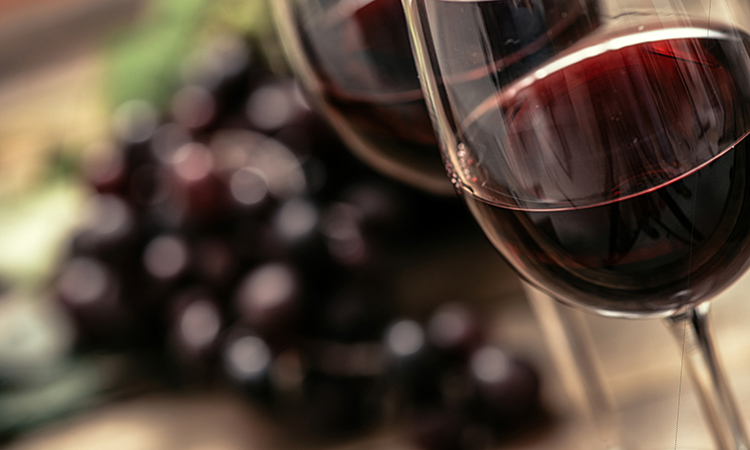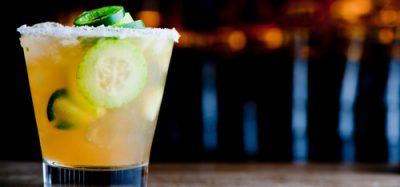Ensuring the authenticity of wine: the role of NMR
- Like
- Digg
- Del
- Tumblr
- VKontakte
- Buffer
- Love This
- Odnoklassniki
- Meneame
- Blogger
- Amazon
- Yahoo Mail
- Gmail
- AOL
- Newsvine
- HackerNews
- Evernote
- MySpace
- Mail.ru
- Viadeo
- Line
- Comments
- Yummly
- SMS
- Viber
- Telegram
- Subscribe
- Skype
- Facebook Messenger
- Kakao
- LiveJournal
- Yammer
- Edgar
- Fintel
- Mix
- Instapaper
- Copy Link
Posted: 18 December 2020 | Bruker BioSpin | No comments yet
In a recent webinar, Thomas Spengler of Bruker BioSpin along with Elena Meléndez Álvarez and Eva Lopez Rituerto of Estación Enológica de Haro, La Rioja-Spain discussed the role of NMR in assuring authenticity of Spanish Wines.


With the increasing prevalence of economically motivated adulteration and ever-widening trade routes, it is essential that the authenticity and purity of a wine can be verified throughout its entire journey from bottling to customer. This gives peace of mind to both the stakeholders and consumer. However, conventional techniques are no longer sufficient to tackle sophisticated modes of adulteration.
Nuclear Magnetic Resonance (NMR), as a multi-marker and non-targeted technique, is filling this gap, providing a rapid and highly reproducible method for wine authenticity analysis.
How can authenticity be confirmed by NMR?
NMR is a spectroscopic technique that quantifies the compounds present in a complex mixture through identification of the molecular structures. Each compound produces a specific unique sequence so the peaks in an NMR spectra indicate the components of a mixture, and the relative intensity of peaks indicate the amount of each compound present. Comparing spectra obtained from an unknown sample with the spectra of a known mixture can confirm the authenticity of a sample. As NMR is highly reproducible, it allows the building of robust reference databases against which the spectra of samples can be matched.
Bruker has developed food-profiling methods together with collaboration partners to test the authenticity and purity of food products using the FoodScreener™.
How does FoodScreener™ help in wine authenticity testing?
FoodScreener simultaneously detects several hundred compounds in a wine sample. The signals obtained are automatically compared with a substantial reference database (currently around 26,000 samples but this is being continuously expanded) to confirm the spectra matches a genuine product. This process takes just 20 minutes.
The analysis report contains comprehensive information about the tested wine, including origin, as well as the grape variety of mono varietal wines and the quality grade of Spanish wines.
What is Estación Enológica de Haro?
Estación Enológica de Haro (EEH) is a teaching and training centre dedicated to creating fields of expertise to study vine growing. Together with The Scientific Research Council and the University of La Rioja, it makes up the Institute of the Vine and Wine Sciences; a reference point for grape-growing and wine making in Spain.
The EEH is the official laboratory for the Government of La Rioja and provides analysis services to private clients across Spain. The centre evaluates 25,000 samples annually and conducts around 263,000 analyses every year.
One of the latest initiatives of the EEH centre is adoption of the Foodscreener Wine-Profiling 4.0 methodology to safeguard the authenticity and purity of Spanish wines.
How does Wine-Profiling 4.0 facilitate the work of EEH?
The Wine-Profiling NMR technology has revolutionised wine testing at EEH. The versatility of the technique and equipment has allowed us to adapt it specifically to the required application. This may be self-monitoring, fraud control or developing improvements to a wine‑making process. The Rioja DOC wines are categorised as crianza, reserva, gran reserva and young wine, depending on the winemaking method. With the Wine-Profiling 4.0 method, EEH is able to certify Rioja wine categories. This model can be adapted to other regions according to demand.
The identity analysis is another strength of NMR. For example, by comparing the two fingerprints produced from the analysis, it can ascertain whether wine purchased in bulk is the same. Since the signals that differentiate them are known, one can determine the source of the problem, eg, poor storage or fraud.
The instrument provides information on over 50 metabolites in a single analysis, which was not previously possible. This enables the user to readily certify the authenticity or study the composition of a wine sample. Furthermore, the analysis can be completed in under 20 minutes using less than one millilitre of sample.
If you missed the webinar, you can watch again on-demand here.
Issue
Related topics
Beverages, Equipment, Food Fraud, Ingredients, Nuclear Magnetic Resonance (NMR), Quality analysis & quality control (QA/QC), Research & development, Supply chain, Technology & Innovation









